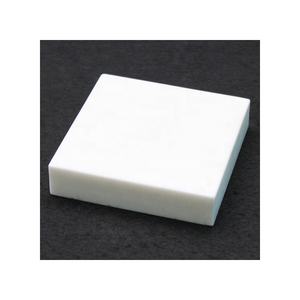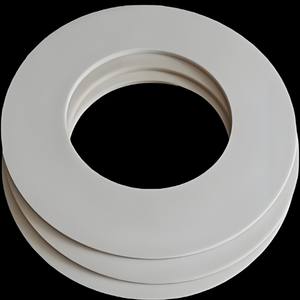Discover Premium Ceramic Products | Durability & Elegance United | Advanced Ceramics
PRODUCT PARAMETERS
Description
Overview of aluminum nitride ceramics
Aluminum Nitride Ceramic is an advanced ceramic material with aluminum nitride as the main component. It has been widely used in electronics, optics, and mechanics due to its unique properties.
Features of aluminum nitride ceramics
High thermal conductivity: Aluminum nitride ceramics have relatively high thermal conductivity, usually between 170-260 W/m·K, which makes it an excellent heat dissipation material. It is especially suitable for electronic devices that require efficient heat dissipation, such as substrate materials for power semiconductor devices.
Good electrical insulation: Despite its high thermal conductivity, aluminum nitride ceramics are excellent insulators of electricity, which can effectively prevent current leakage and ensure the safe operation of electronic components.
Low dielectric constant and dielectric loss: These characteristics make aluminum nitride ceramics very suitable for use in high-frequency circuits because it can reduce energy loss during signal transmission.
High temperature resistance: Aluminum nitride ceramics can maintain structural stability and strength at extremely high temperatures. Its melting point is about 2800°C, so it is suitable for applications in high temperature environments.
Low thermal expansion coefficient: Compared with semiconductor materials such as silicon, aluminum nitride has a lower thermal expansion coefficient, which means it has better dimensional stability when the temperature changes, which helps improve packaging reliability.
Corrosion resistance: Aluminum nitride ceramics have good chemical stability to most molten metals and are not easily oxidized or corroded, allowing them to perform well in harsh environments.
High mechanical strength: Although not as hard as some other types of ceramic materials, aluminum nitride ceramics still provide enough mechanical strength to allow them to be used in many structural applications.
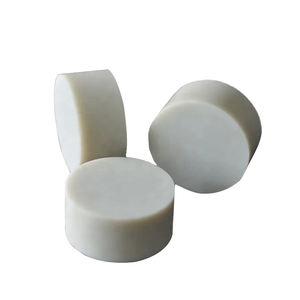
(Hot Electrical Insulation AlN Aluminium Nitride Ceramic Plate)
Specifications of Hot Electrical Insulation AlN Aluminium Nitride Ceramic Plate
The Hot Electrical Insulation AlN Aluminium Nitride Ceramic Plate is engineered for advanced thermal management in high-power electronics and industrial systems. It delivers superior performance under extreme conditions. The material’s key feature is its high thermal conductivity, typically ranging between 170-220 W/m·K. This allows rapid heat transfer away from sensitive components, reducing overheating risks. Its electrical insulation properties are equally critical. The ceramic plate provides a dielectric strength exceeding 15 kV/mm, ensuring reliable insulation even in high-voltage environments.
The thermal expansion coefficient of AlN ceramic closely matches silicon and other semiconductor materials. This compatibility minimizes stress at material interfaces during temperature fluctuations. Mechanical durability is another advantage. The plate boasts a flexural strength of 300-400 MPa, resisting cracks under mechanical load. It maintains structural integrity in harsh operating conditions.
AlN ceramic operates effectively across a wide temperature range, from -40°C to 1200°C. It resists thermal shock, making it suitable for applications with rapid temperature changes. Chemical stability is a key benefit. The material withstands corrosion from acids, alkalis, and molten metals, ensuring longevity in aggressive environments.
Standard thickness options for the plate include 0.5mm, 1.0mm, 2.0mm, and 5.0mm. Custom dimensions are available for specialized requirements. Surface finishes can be adjusted from polished to coarse, depending on application needs. The ceramic plate is compatible with thin-film metallization processes, enabling integration into circuits or heat sinks.
Common applications include power semiconductor modules, LED substrates, laser diode carriers, and high-frequency devices. It is used in aerospace, automotive, and energy sectors where thermal management and electrical insulation are critical. The material’s low density reduces overall system weight compared to traditional metal heatsinks.
Processing methods for AlN ceramic include CNC machining, laser cutting, and grinding. These techniques ensure precise tolerances for complex geometries. The plate is RoHS-compliant and free of hazardous substances, meeting global environmental standards. Packaging options include vacuum-sealed anti-static bags to prevent contamination during storage and transport.
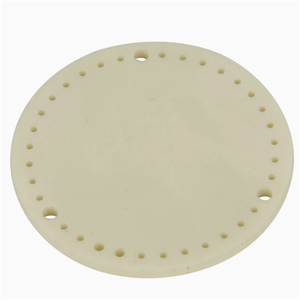
(Hot Electrical Insulation AlN Aluminium Nitride Ceramic Plate)
Applications of Hot Electrical Insulation AlN Aluminium Nitride Ceramic Plate
Hot electrical insulation AlN aluminum nitride ceramic plates are used in many industries. These plates handle high heat and stop electricity from passing through. They work well in tough conditions.
In electronics, AlN ceramic plates cool devices. They move heat away from parts like microchips and power modules. This stops overheating. The plates also insulate circuits. They are used in circuit boards and semiconductor packaging.
Power systems use AlN plates for high-voltage insulation. They are placed in transformers and capacitors. The plates keep energy loss low. They handle strong electric fields without breaking down. This makes power devices safer and last longer.
LED lighting relies on AlN plates. LEDs create heat when producing light. The plates pull heat away from LED chips. This keeps the lights bright and stable. It also stops color shifts over time.
Electric vehicles use these plates in battery systems. Batteries get hot during charging and driving. AlN plates manage the heat. They insulate battery cells from each other. This prevents short circuits.
Aerospace and defense need materials that survive extreme heat and stress. AlN plates shield sensitive parts in rockets and satellites. They insulate sensors and electronics from high temperatures.
Telecom equipment uses AlN plates for signal stability. High-frequency devices like antennas and radar systems generate heat. The plates keep temperatures steady. This ensures clear signals and fewer interruptions.
Renewable energy systems like solar panels use AlN plates. They insulate inverters and converters. The plates handle outdoor weather and temperature swings. This helps systems run smoothly for years.
Industrial heaters and furnaces use AlN parts. The plates resist heat and chemicals. They last longer than metal parts. This cuts downtime and repair costs.
AlN ceramic plates are strong and reliable. They solve heat and insulation problems in modern technology. Their use grows as industries demand better performance and safety.
Company Introduction
Advanced Ceramics founded on October 17, 2014, is a high-tech enterprise committed to the research and development, production, processing, sales and technical services of ceramic relative materials and products.. Since its establishment in 2014, the company has been committed to providing customers with the best products and services, and has become a leader in the industry through continuous technological innovation and strict quality management.
Our products includes but not limited to Silicon carbide ceramic products, Boron Carbide Ceramic Products, Boron Nitride Ceramic Products, Silicon Carbide Ceramic Products, Silicon Nitride Ceramic Products, Zirconium Dioxide Ceramic Products, Quartz Products, etc. Please feel free to contact us.(nanotrun@yahoo.com)

Payment Methods
T/T, Western Union, Paypal, Credit Card etc.
Shipment Methods
By air, by sea, by express, as customers request.

5 FAQs of Hot Electrical Insulation AlN Aluminium Nitride Ceramic Plate
What makes AlN ceramic plates suitable for electrical insulation? AlN ceramic plates have high thermal conductivity and excellent electrical insulation. They handle extreme temperatures without breaking down. This makes them ideal for high-power electronic devices. Their chemical stability prevents corrosion in harsh environments. They are safer and more reliable than traditional materials like alumina.
Where are AlN ceramic plates commonly used? These plates are used in electronics, aerospace, and automotive industries. They work as heat sinks in LED lighting and power modules. They serve as substrates for semiconductor devices. They protect circuits in high-voltage equipment. Their ability to manage heat and electricity makes them versatile for advanced technologies.
How does AlN compare to alumina in thermal performance? AlN conducts heat far better than alumina. AlN’s thermal conductivity is 170-180 W/mK. Alumina’s is only 20-30 W/mK. AlN removes heat faster in high-power applications. This reduces overheating risks. AlN also resists thermal shock better. It lasts longer under rapid temperature changes.
Can AlN ceramic plates withstand very high temperatures? Yes. AlN plates operate from -273°C to 1400°C. They keep their shape and strength even at extreme heat. They do not melt or degrade easily. This makes them suitable for furnaces and high-temperature sensors. Their performance stays stable under prolonged thermal stress.
Are custom sizes and shapes available for AlN plates? Manufacturers offer custom designs. AlN ceramics can be cut into specific dimensions. They can be machined into complex shapes if needed. Thickness and surface finish are adjustable. Customization ensures they fit precise application requirements. Always confirm specifications with suppliers before ordering.
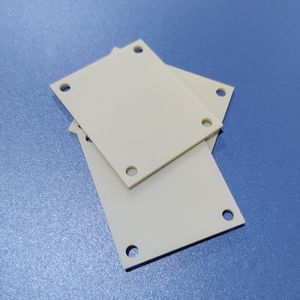
(Hot Electrical Insulation AlN Aluminium Nitride Ceramic Plate)
REQUEST A QUOTE
RELATED PRODUCTS
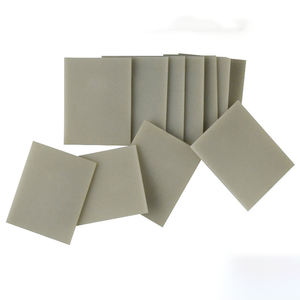
2.5mm Thick Customized Aluminium Nitride/AlN Ceramic Sheet
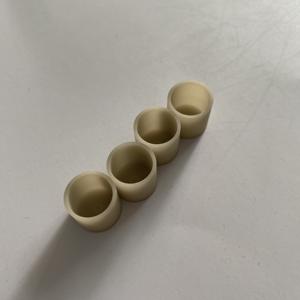
Boron Nitride Aluminum Nitride Ceramics
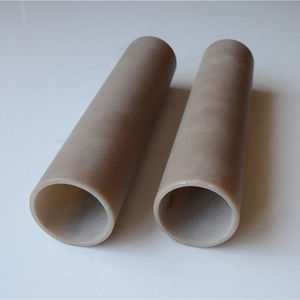
Whole Cheap ALN Ceramic Board Aluminium Nitride Ceramic Part Structural Parts
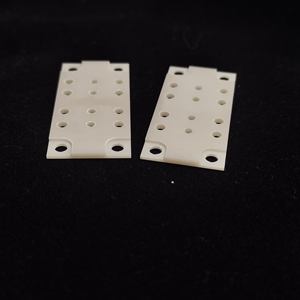
Custom-Made High Thermal Conductivity Aluminum Nitride Aln Ceramic
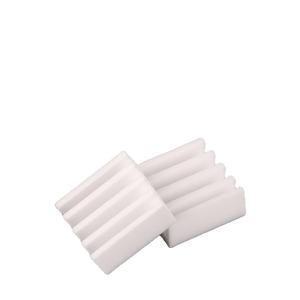
Ry Heat Resistant Aluminum Nitride Aln Ceramic
